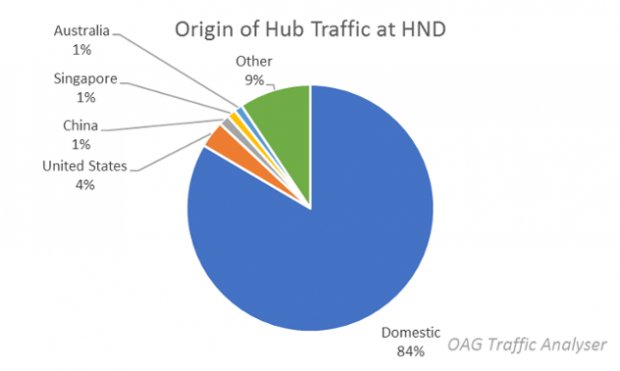Dynamics of Connectivity – Haneda – Japan’s Beating Heart

Next in OAG’s series on Asian Hub Connectivity, we consider connectivity at Haneda International Airport (HND). While Hong Kong has carved out a role as an international connecting point, especially for people wishing to travel to and from China, and Singapore is developing as a regional hub for South East Asia, the profile of connections at Haneda is completely different.
With annual passenger bookings of around 70 million, according to OAG Traffic Analyser, the airport is busier than either Hong Kong International Airport or Singapore Changi International Airport, and dominates Japan’s air transport sector, as OAG wrote about earlier this year in ‘The Haneda Story’. However, whereas 20% of passengers connect between flights at Hong Kong and 26% do the same at Singapore, at Haneda the proportion connecting is much lower, at 18%, although this still means that over 12 million people are using the airport as a transit point each year.
A key distinction at Haneda is that the vast majority of connections are domestic. Over 70% of all connecting passengers travel between an origin in Japan and a destination also in Japan. Although data for 12 months shows that connecting domestic passengers travelled between as many as 782 airport-pairs, travel to or from Sapporo (CTS) dominates the list, and features in 28% of all domestic connecting journeys.
Even international connections at Haneda tend to have an origin or destination in Japan, and none of the Top 10 country pairs feature an international-to-international connection.
Unsurprisingly, most of the domestic connecting traffic flies on one of the two main full service carriers in Japan, All Nippon Airways and Japan Airlines. However, given that the share of capacity for the same 12 months is similar to the share of hub bookings, this appears to be less the consequence of planned targeting of connecting traffic and more the result of the scale and convenience of connecting at Haneda.
Stay tuned for more Asia Hubs blog posts in our series and to see the whole article, click here.


